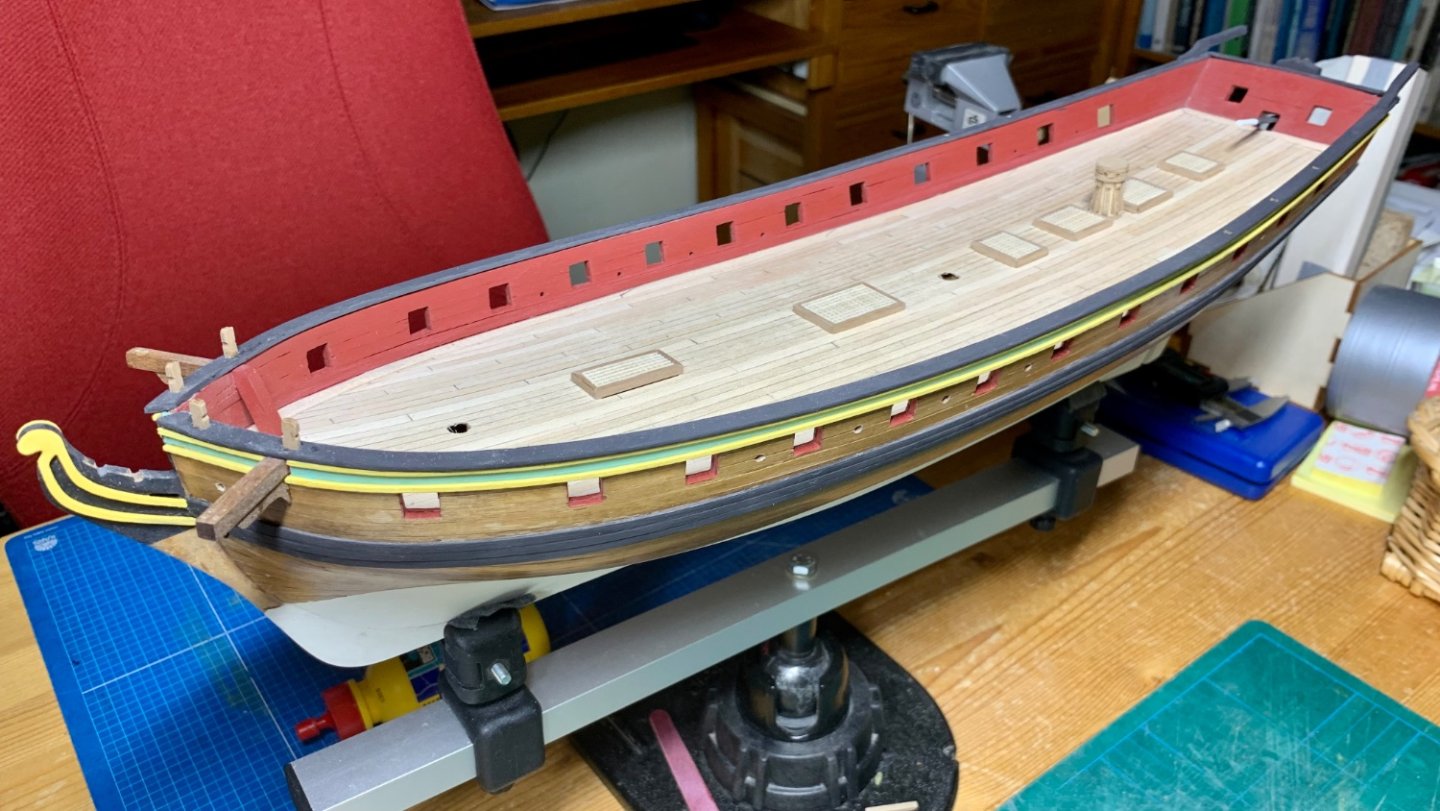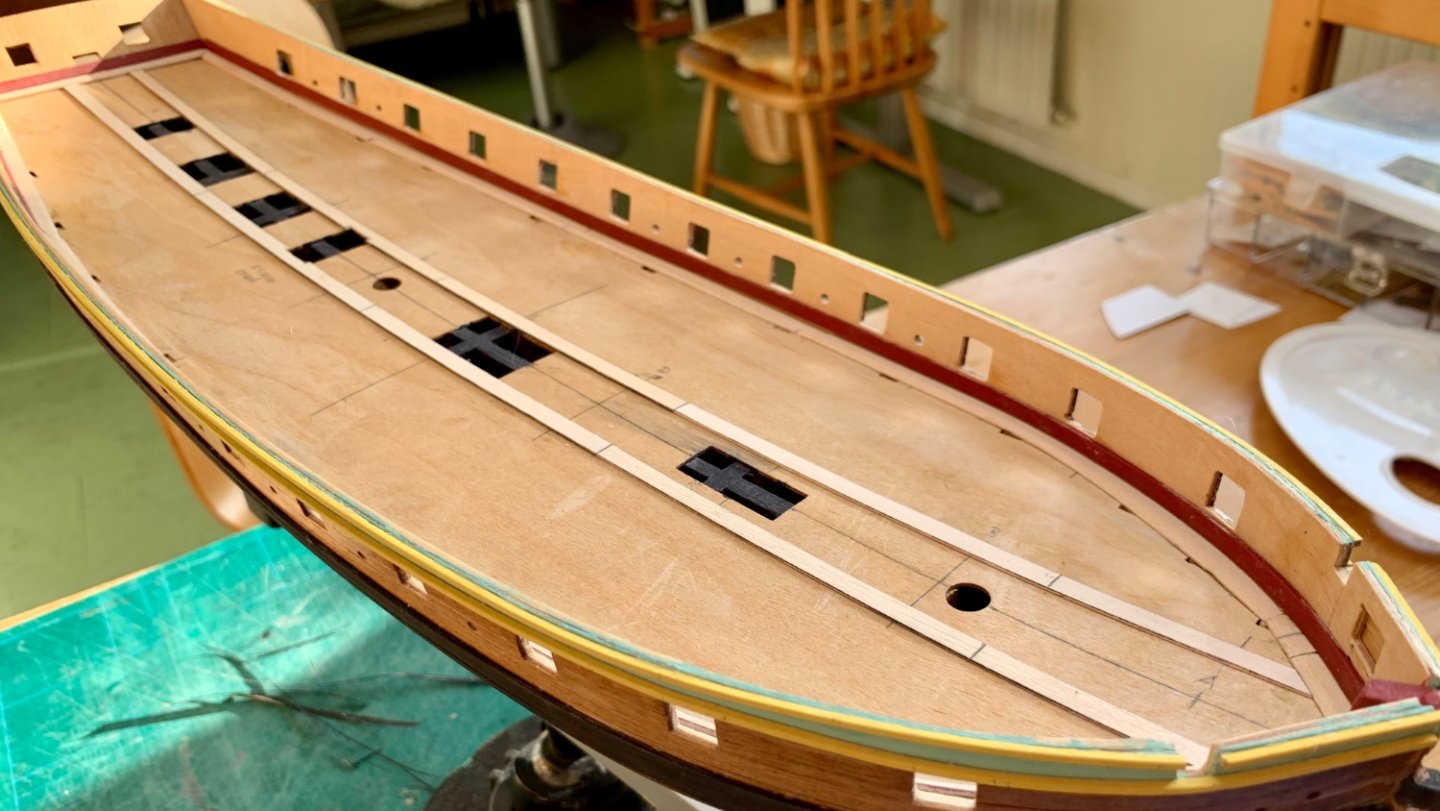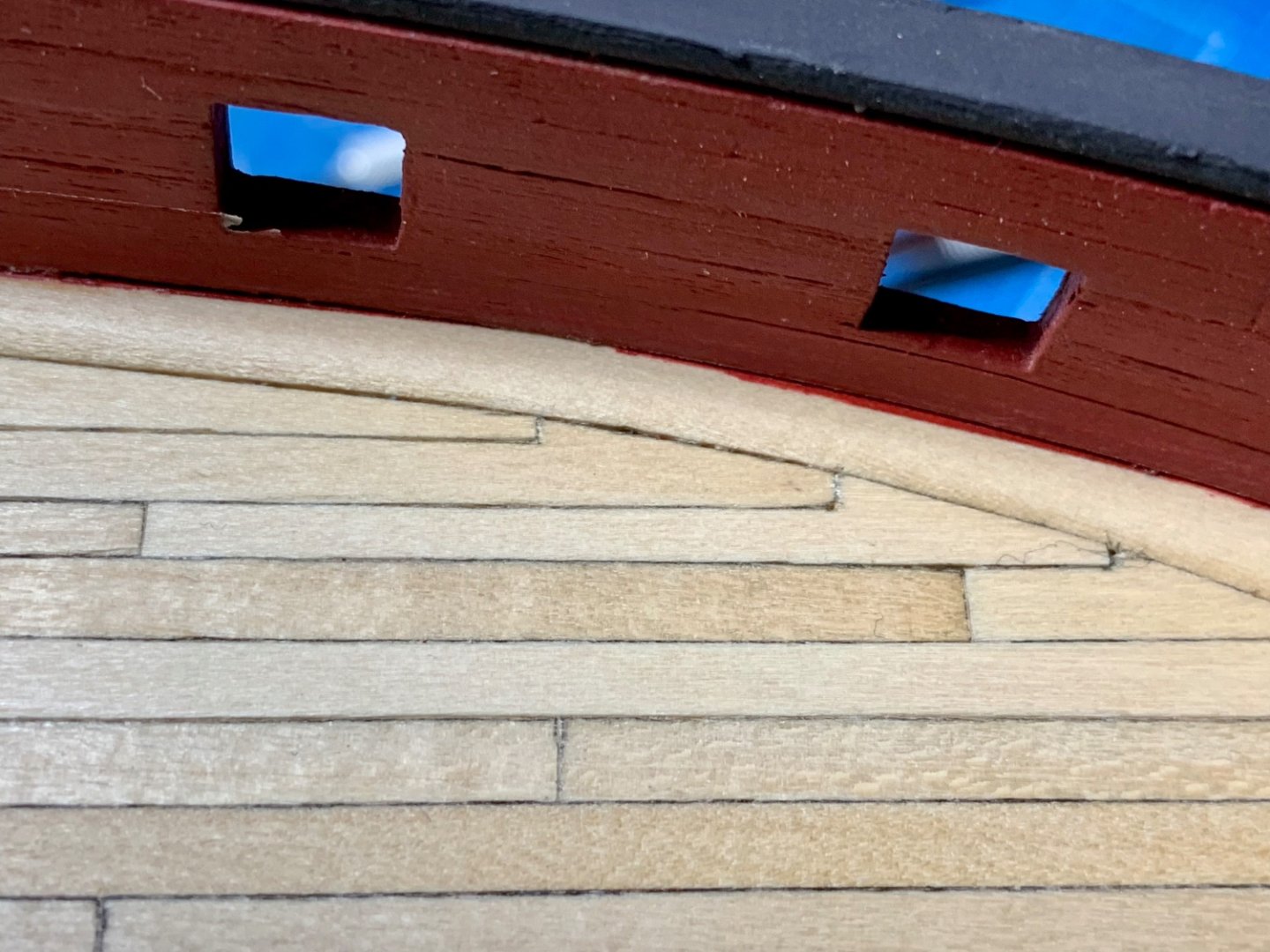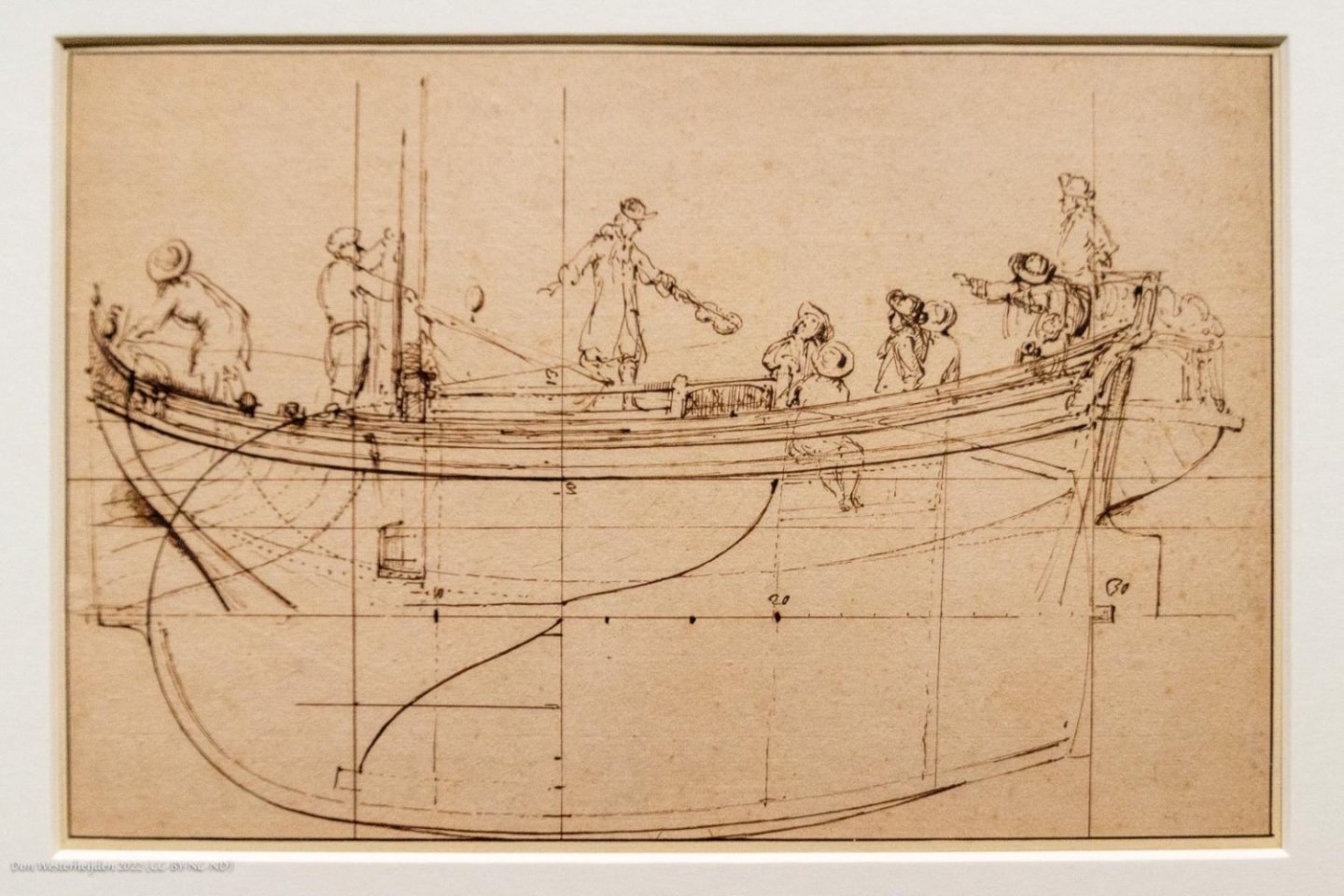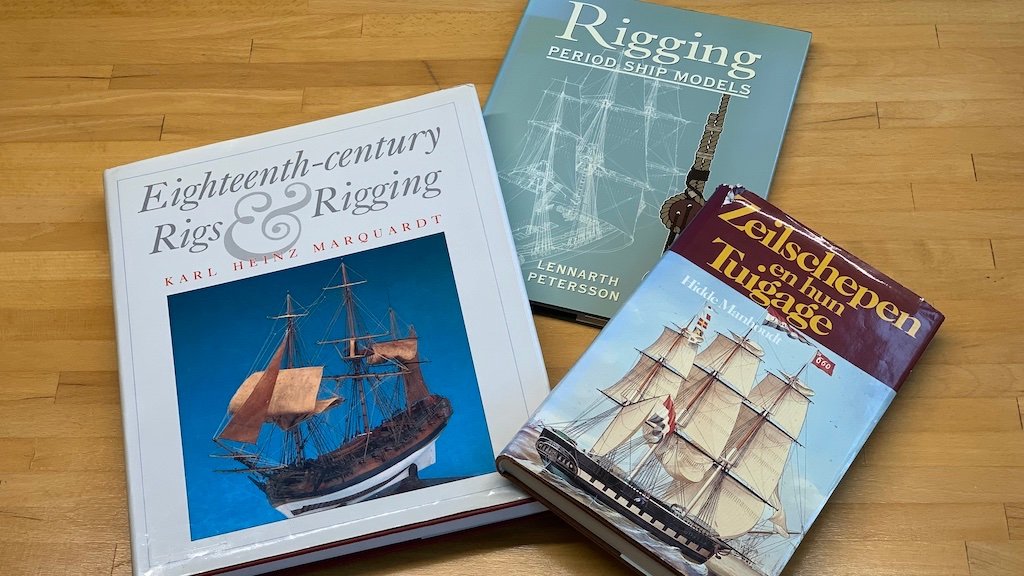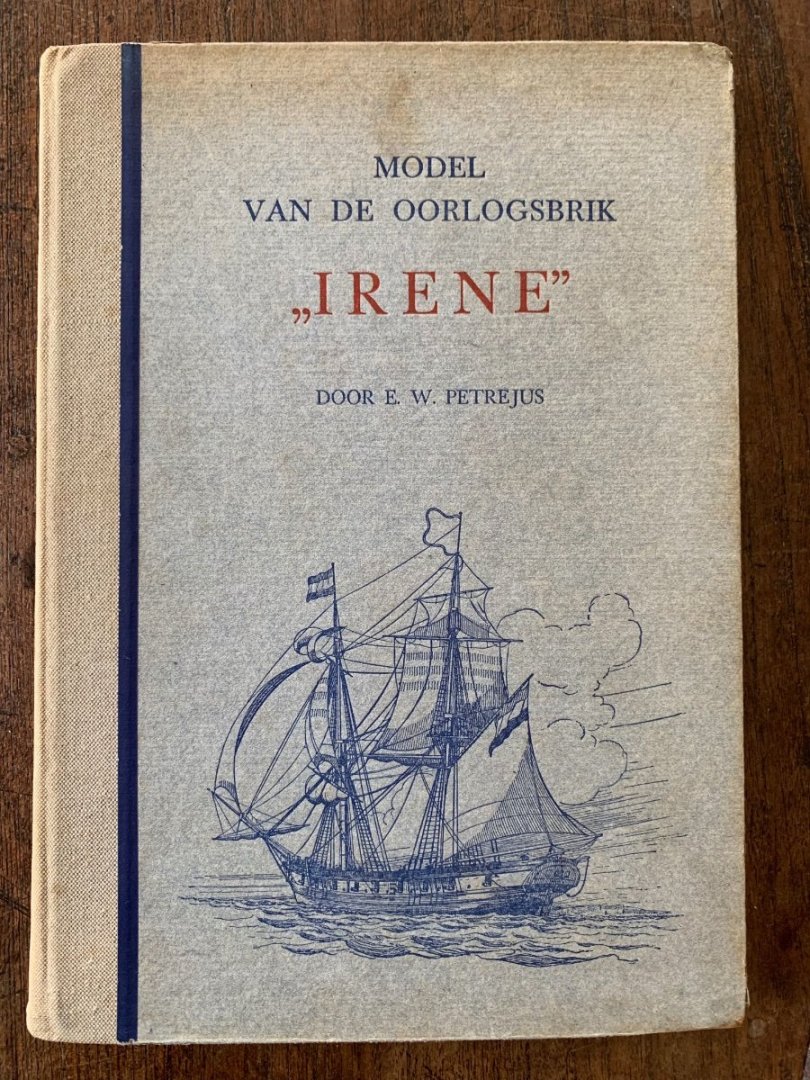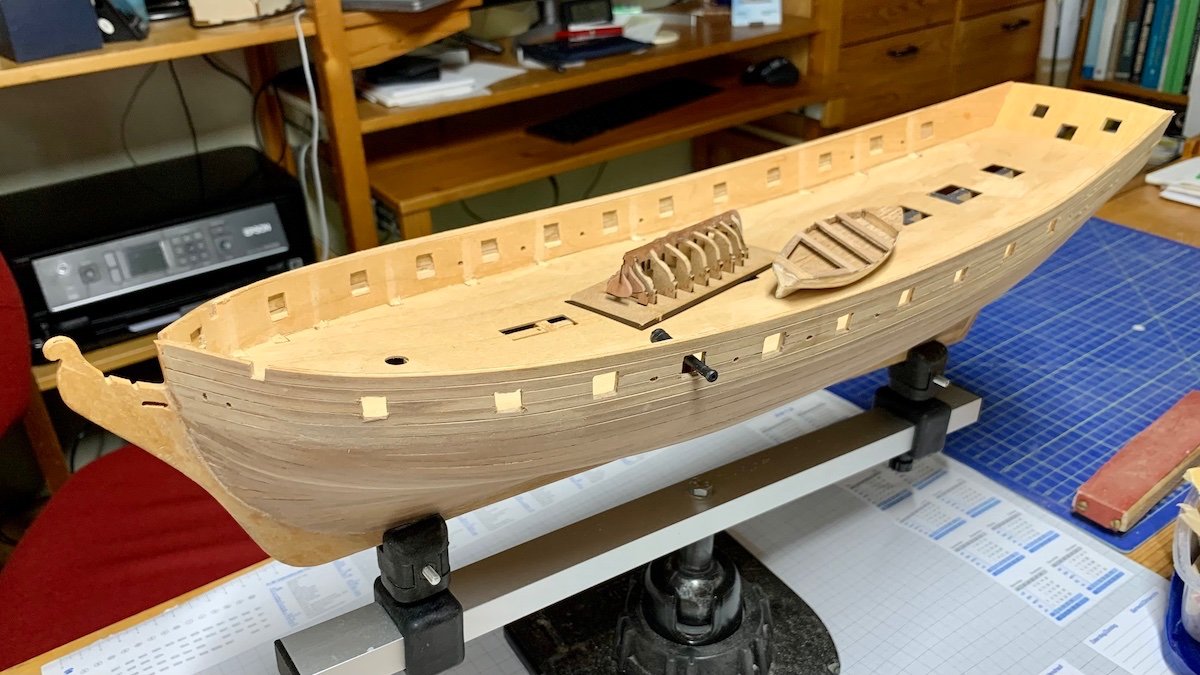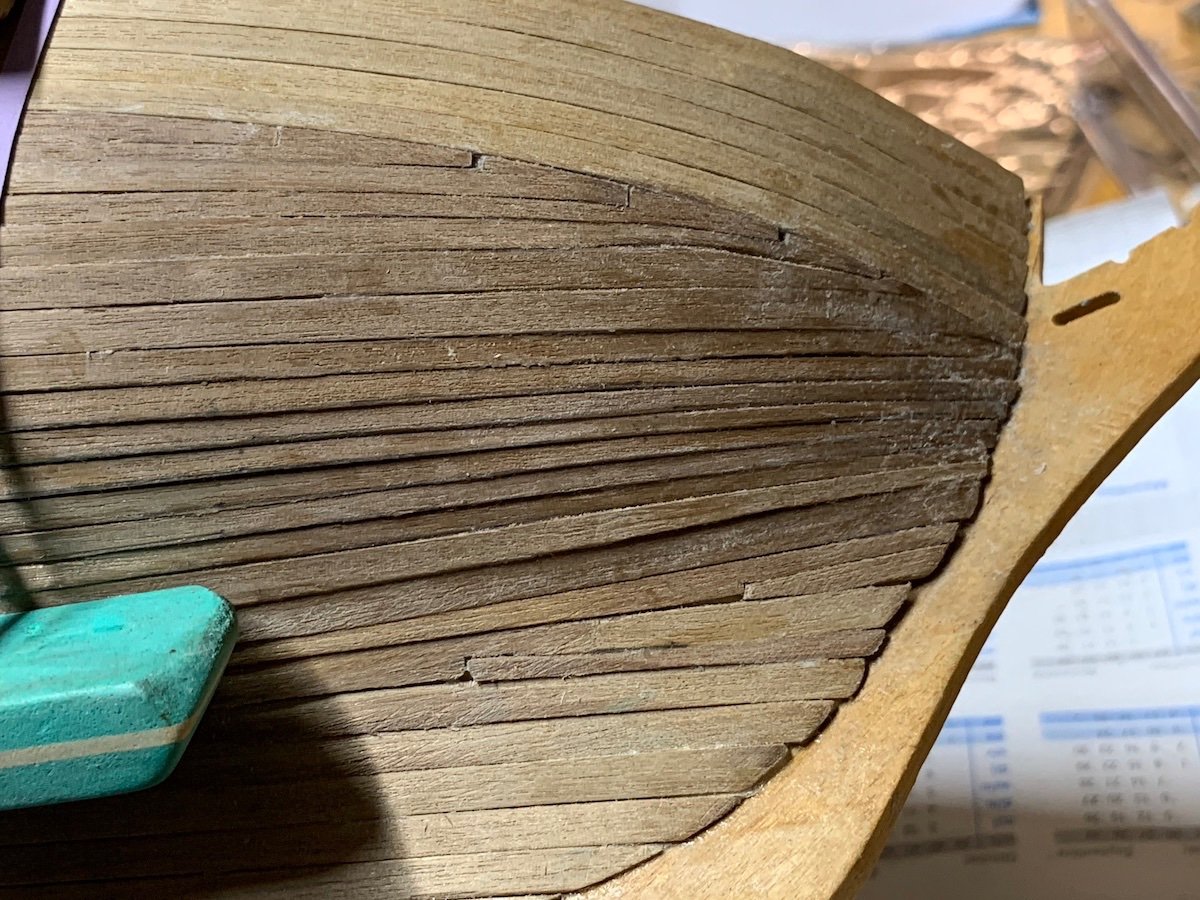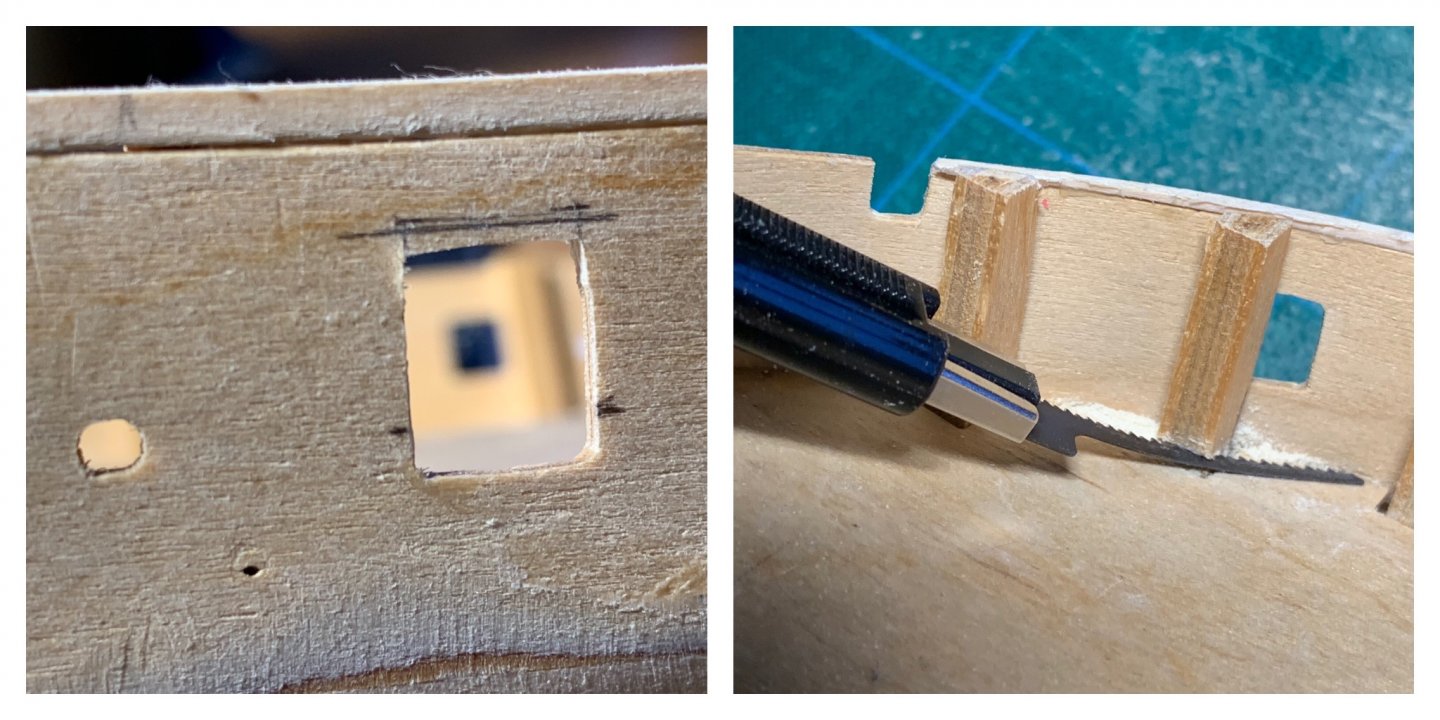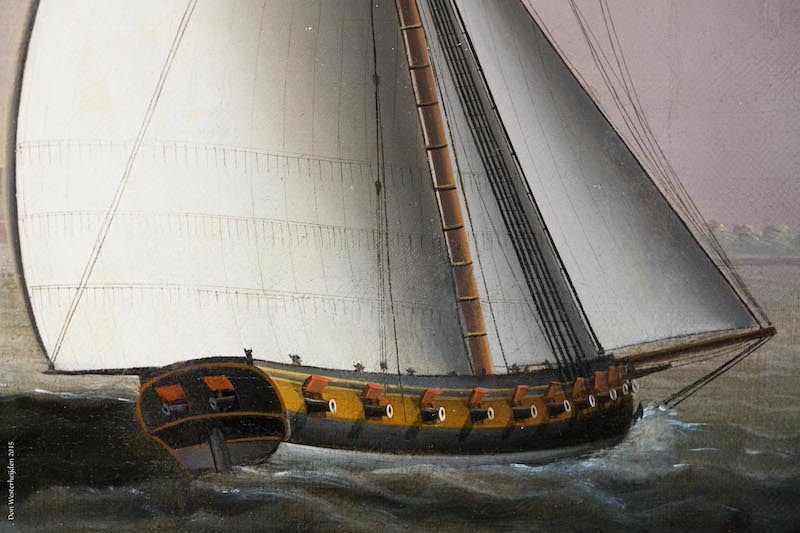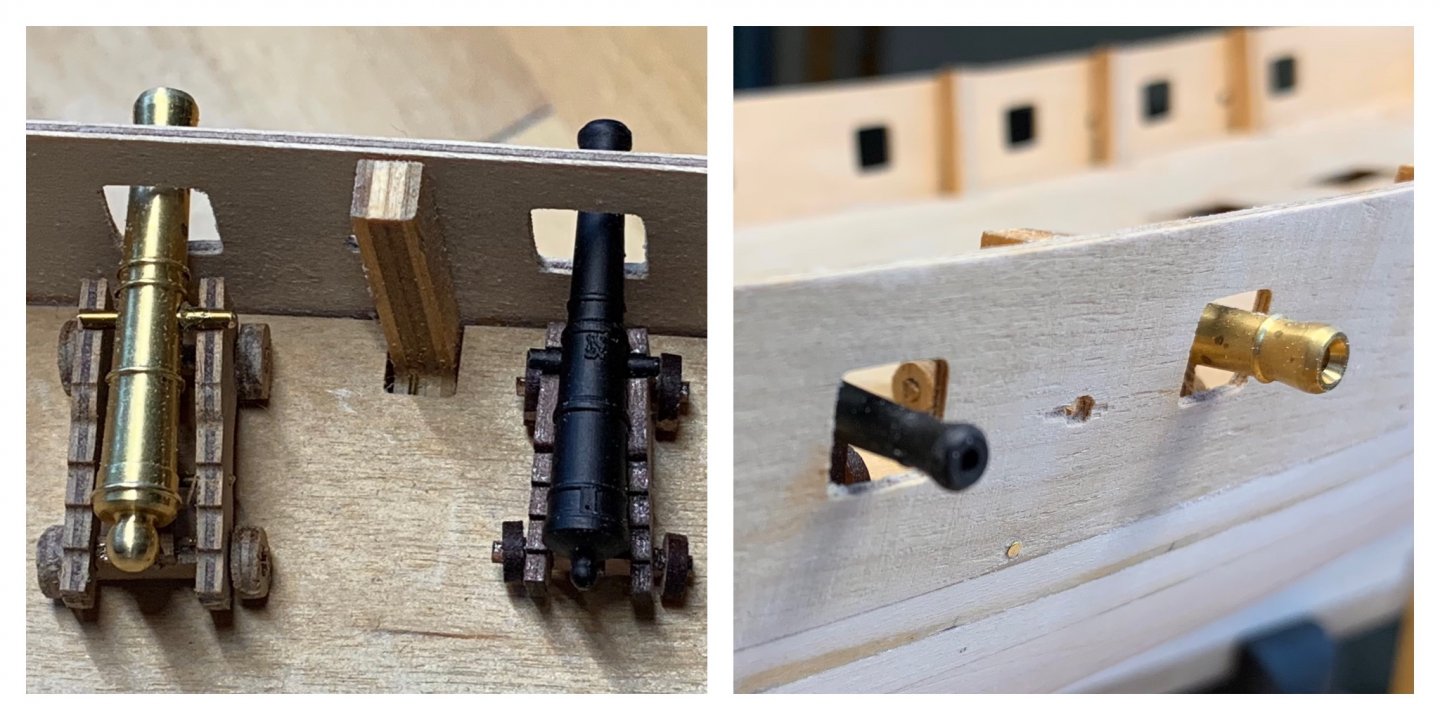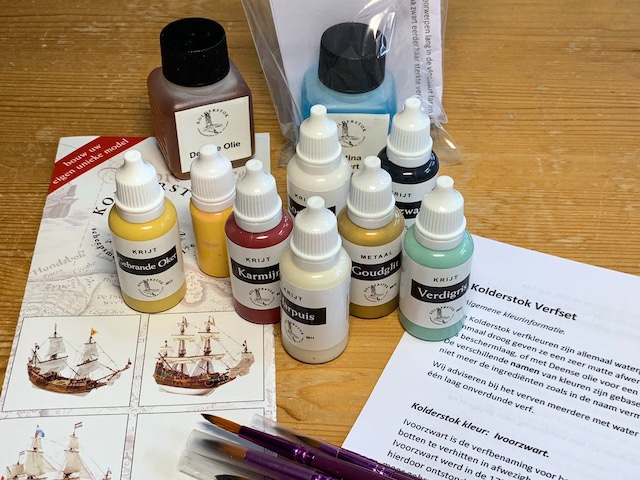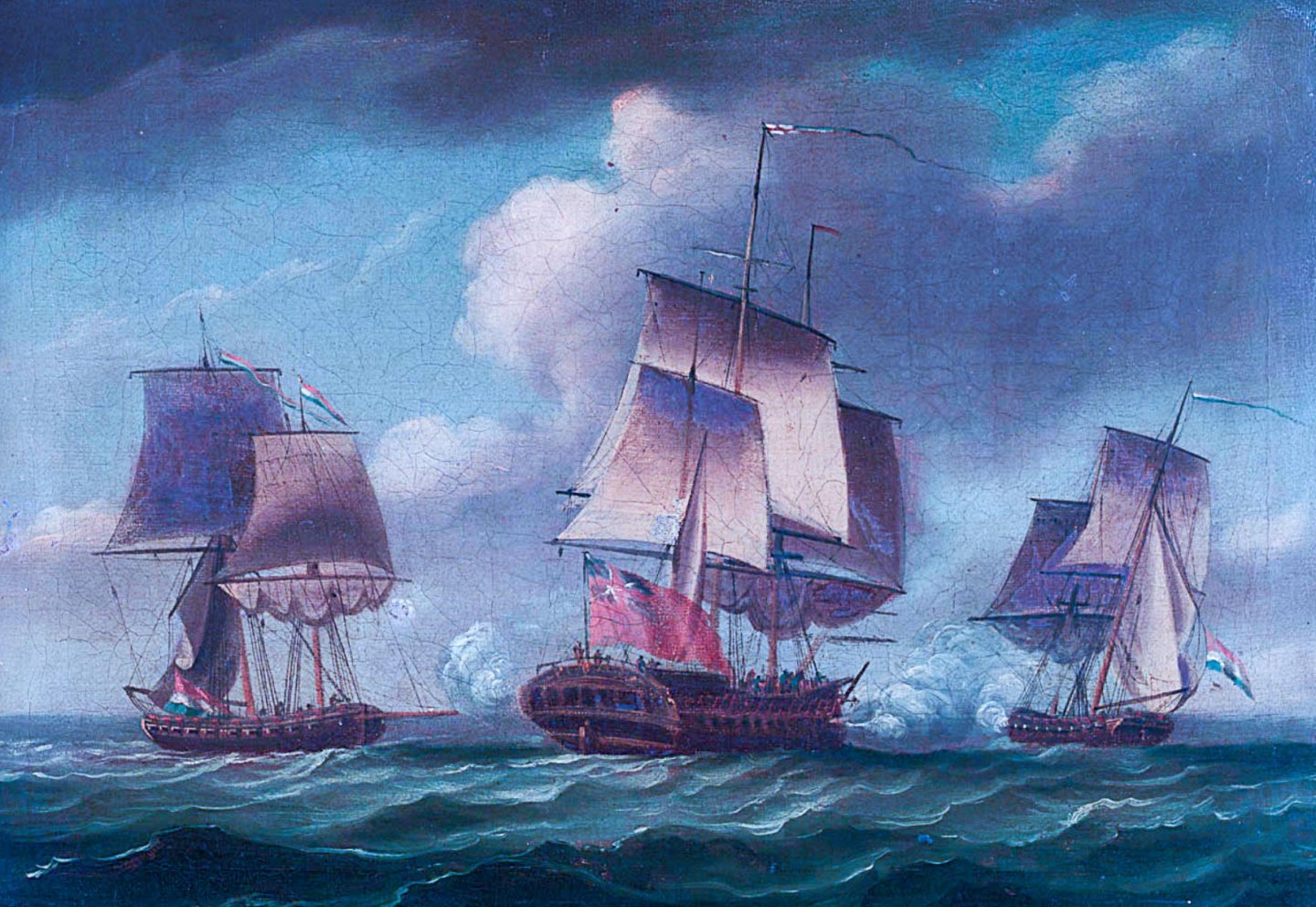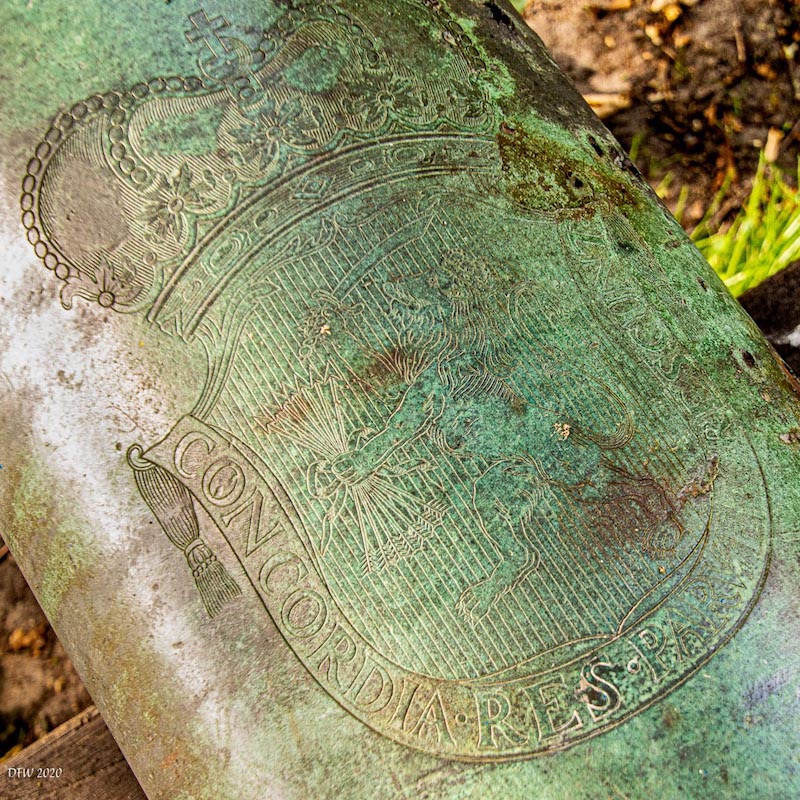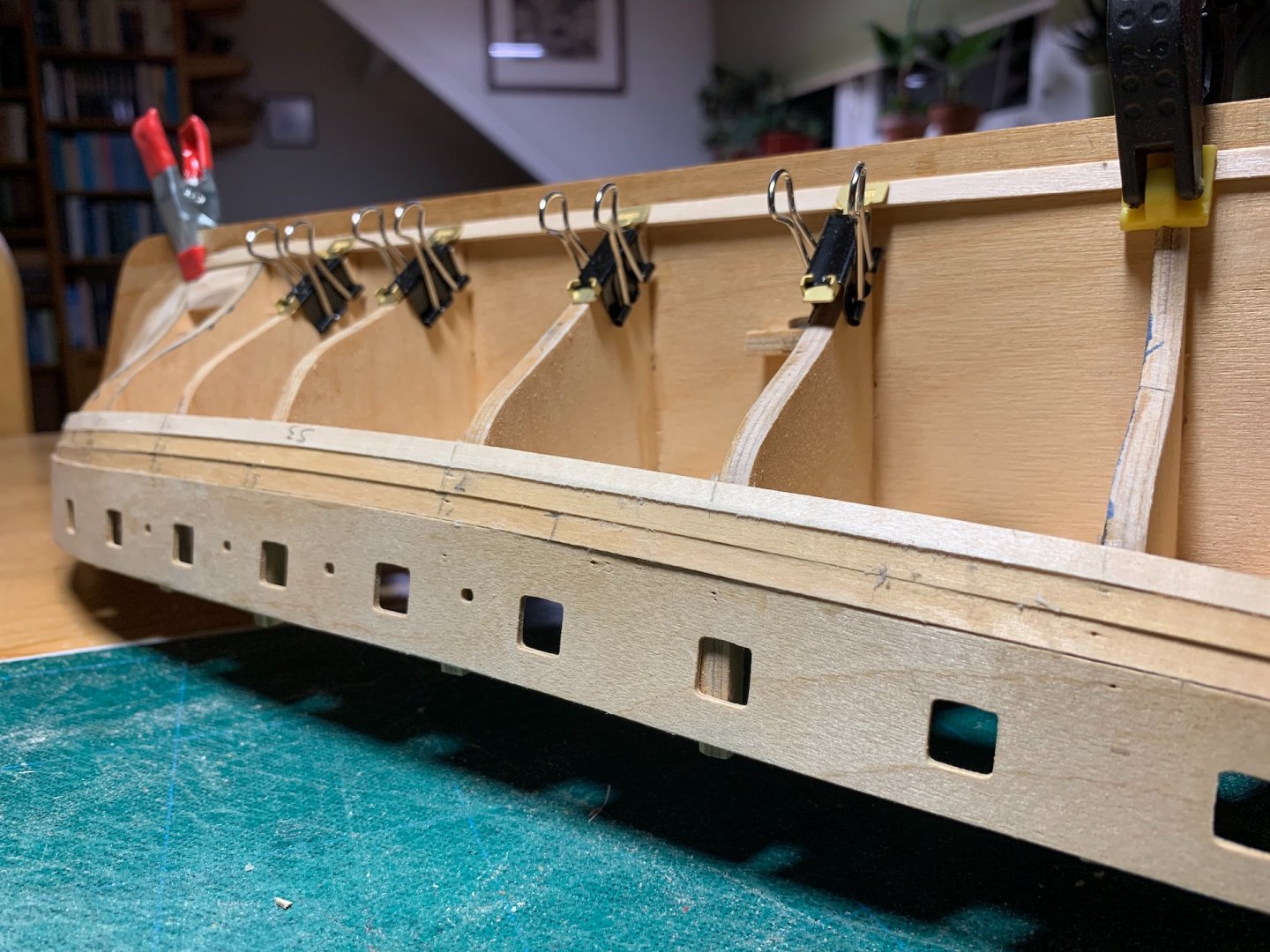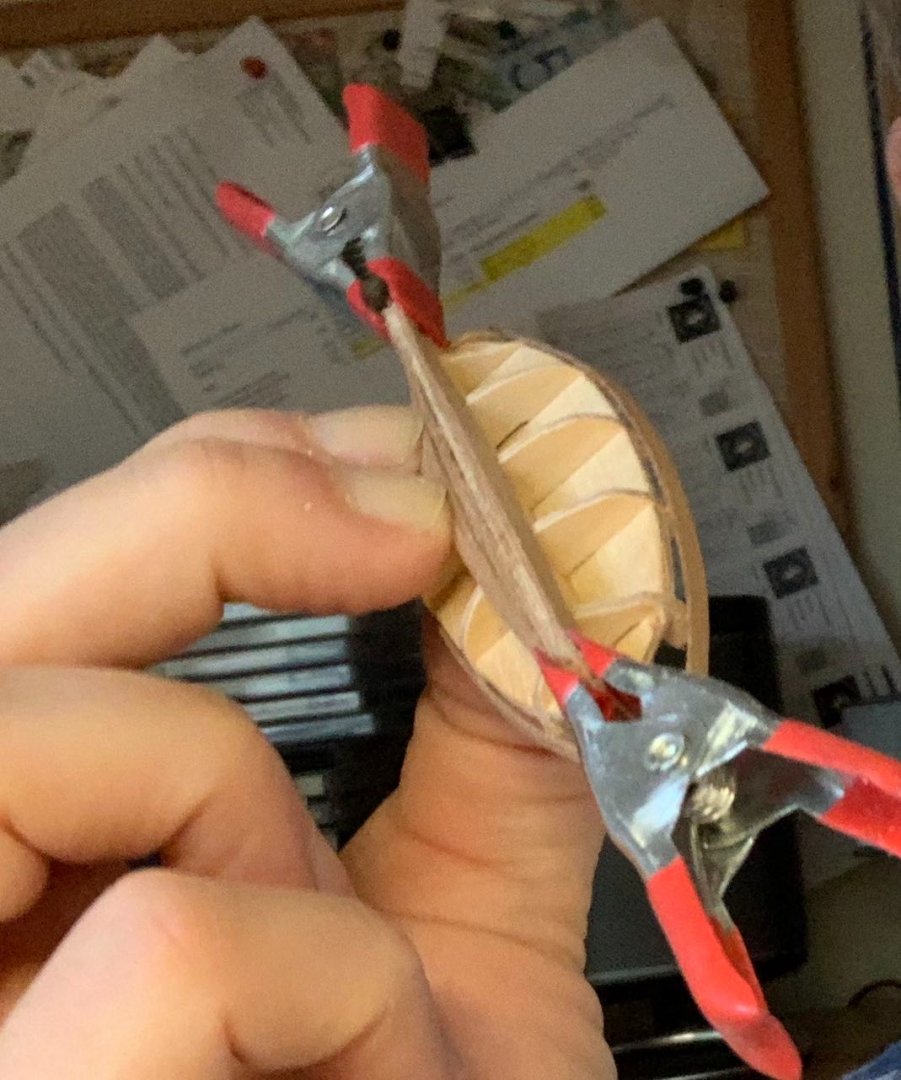-
Posts
61 -
Joined
-
Last visited
Content Type
Profiles
Forums
Gallery
Events
Everything posted by Aa-schipper
-
Historic research on prizes and prices Meanwhile, I made a little progress in my historic research about the Mars. When Captain McBride of the Artois wrote to a friend—a letter published in December 1781, within weeks of his capturing Mars and Hercules—he estimated the value of the two prizes at £ 20,000. In current money, that would equal about £ 1.7 million (source: https://www.nationalarchives.gov.uk/currency-converter/#currency-result). Prize money was the way for Royal Navy officers to get rich in those days, and the captain might add £ 7,500 to his fortune (source: http://www.hmssurprise.org/ranks-and-prize-money), which would bring in a rent of £ 300 a year—not enough to retire upon for a gentleman of his day, but it constituted a nice addition to the family income, I guess. What was not known until now, is that only a month later the ships’ owner, Amsterdam merchant Cruys, demanded compensation from the Dutch Republic’s government for the loss of his two privateers in the course of fighting the country’s enemy, because if such losses were not compensated by government no-one might want to run the risk of outfitting privateers anymore (1. Hey, wasn’t that what privateering is about?, and 2. He was close to the truth and very few privateers went to sea during the 1781-1784 war). His demand amounted to f 225,000. In modern money, that makes € 4.6 million (source: https://iisg.amsterdam/en/research/projects/hpw/calculate.php), or at least double the estimate of McBride. There may be several explanations for the difference—I am not going to speculate which one(s) might be true. By the way, I have not found what the government responded to this claim. The search continues, just like my building, i.e. surely but slowly.
-
A year since the previous post, during which the shipyard has been on its own for a long time, but with the advent of winter, I got going again. Following Petrejus’ observations about decking of the brig Irene, a couple of changes were made to the deck. First, to make sense of scuppers, the outermost planks of the deck were made wider and (at the outside) thicker: I used 5 x 1.5 mm lime wood, sanded down to 0.5 mm on the inside, to be flush with the deck. The MSW and YouTube sources on side bending helped me overcome my doubts and in the end my wife got her iron back without damage, while I damaged only one bit of a plank. Second, instead of the English tradition of a single king plank in the middle, I started the deck plank pattern with two wider (and originally thicker) planks either side of the hatches (5 mm in between the 4 mm from the kit). These ‘schaarstokken’ were the Dutch tradition, intended to strengthen the attachment of eyelets and the like. Third, still following Petrejus, the ‘sharp’ ends of deck planks were made according to the ‘primitive’ pattern used in Dutch shipbuilding well into the 19th century, sort of overlapping each other, again needing wider planks than the 4 mm stock. A drawback of my adaptations was that I used lime wood from different sources and only when working on the deck planking, I realised the colour differences between the original wood and the material that I had ordered from another source. The latter were slightly whiter than the original, and I tried to stain those planks with… tea. (Other methods, e.g. ’official’ stain or varnish, were either too strong or practically invisible.) Perfection was not reached, of course. When I varnished the deck and the first deck fittings, the hatches, earlier today, new colour variations appeared, not so much between wood from the different sources, but rather of individual planks. Well, they remain subtle differences of shade, which makes for a lively deck, not unnatural to my eyes (after all, originally they used planks from different trees too, didn’t they?). A good foundation for the next steps, I suppose: further deck fittings, those scupper holes, and I’m also busy with the bow.
-

Line drawing and art - Willem van de Velde son
Aa-schipper replied to Aa-schipper's topic in Nautical/Naval History
Dear Wefalck, Did you mean this one? That was from another drawing, by the elder Van de Velde, if I see it correctly. -

Line drawing and art - Willem van de Velde son
Aa-schipper replied to Aa-schipper's topic in Nautical/Naval History
Haha, might it be Jack Aubrey’s great-grandfather? (For our Patrick O’Brian fans) The drawing was made too early to make us think it’s Haendel practicing his Water music, because that only premiered in 1717… -
Till the end of March 2022 a great overview exhibition of the ship drawings and paintings by father and son Van de Velde can be seen in the Maritime Museum, Amsterdam (NL). While I am not sure one could build a model from this line drawing of a yacht by the son (made ca. 1675), isn't this an irresistible combination of technique and art? I could not resist sharing this with all of you, anyway.
-
Talking about books: On MSW members' suggestions I added Marquardt's Eighteenth century rigs & rigging to my documentation about rigging—another major task to be undertaken in the (near?) future. The book arrived today, bought online from a second-hand book shop in an even remoter corner in the Netherlands than where I live. What a volume of minutely-printed text, detailed drawings comparing rigs' details over time and across countries, and a host of tables for sizes, diameters and what not! That'll keep me busy this stormy weekend (and a few more). The other books on the table are the well-known Petersson with his beautifully clear drawings of rigging of HMS Melampus, and Manhoudt's 1946 book about rigging of Dutch, mainly 19th century, sailing ships. Between the three of them and the various excellent MSW build logs, I should be able to find enough info to decide how to rig the Mars—or to get confused about the conflicting suggestions 😉. But that's for later. First now I turn to planking the cutter, while I wait for some additional lime-wood to be delivered so I can experiment a bit with patterns for planking the deck, where I hope to include a waterway and scuppers. I can find scuppers neither on the kit's plans nor on the NMM line drawings, but every ship must have them, isn't it?
-
Thanks for stopping by, @AJohnson! I had found your gallery of pictures, and liked them very much. Like you, I plan to have some figurines aboard to give scale and a bit of life to the finished ship (a few of the same Amati white metal ones you used are sitting in my drawer, waiting to be painted). But first, I begin orientating myself to laying the deck, for which your pictures are inspirational, too: beautifully detailed! Through researching the Mars & Hercules ships, I have learned much about Dutch history, but am still left with a lot of questions about the ships, the skippers and the owners…
-
An advantage of planking over the gunports is that I can cover up the 13th gunport on each side, right at the bow, which I found on the 1782 line drawing of HMS Orestes from the National Maritime Museum (RGM, nowadays), but which I could not get into the bulwark in a convincing fashion—no doubt that is why it was not outlined in the kit, anyway.
-
To be absolutely sure that the bulwark planks would run straight, I planked right across the gunports. Reopening them with a miniature drill, X-acto blades and needle files is another bit of work in progress; port side almost done, starboard to be started. Filing of the plank ends at those openings would have been necessary anyway, so I do not consider this to be much extra work. In the meantime, as you can see on the false deck, I have been working on the cutter, first the one included in the Caldercraft kit, but later I bought the Vanguard Models cutter, because it looked so much better, and I have begun work on that one as well. The Caldercraft one, with its unnaturally high bottom (more like a deck than a bottom), remains as a training piece. And you’d better always have ‘an heir and a spare’, isn’t it?
-
Second planking Another year gone by and I don’t blame you if you think my Mars build had been abandoned. She’s not, but for much of last year I lived by the saying ‘in doubt, don’t’, because after glueing on the five or so top and bottom planks I was in doubt about getting a neat planking with what I found the complex lines of the Mars. The bow is bluff at the waterline, but becomes somewhat sharp to the keel. The lines towards the stern are more usual for ships of the late 18th century, but nevertheless a combination of concave and convex, so there too I was sure stealers would be needed but I could not imagine where and how long exactly until I glued the planks on. Loose fitting did not give me enough certainty, and previous build logs did not give me enough exact info to steer by, either. Probably these complex but beautiful lines helped make Mars such a fast sailer (as captain McBride remarked in his letter of December 1781, after capturing Mars and its sister ship Hercules), but it put me off for months: I could not imagine how to measure the number of planks or where stealers would be needed. In the end, I decided to find a line where a plank would run ‘naturally’ from stem to stern while touching the lowest plank of the bulwark at the stem. From there, I would work upwards with drop strakes (with reasonably serious scarfs) and downwards to the straight planks near the keel. Still, I had to improvise with stealers front and back and a number of planks had to be tapered at the bow too narrowly at the stem to be realistic. After a first sanding and after applying a bit of wood filler (work in progress), you don’t see much of that and I have regained a bit of confidence that the end result will look satisfactory.
-
If you look closely at the picture above, you see that the starboard bulwark with the gunports in it sits too low: the tops of the bulkheads show above it. Fault of early enthusiasm, in 2016, that needs repairing. And I did: I added half a plank on top of it and sanded it down till it was level with the bulkhead ends. And with files I enlarged the gunports at their upper side to bring up up to the required height (checked with callipers against their opposite number). At the bottom end, ‘thresholds’ made out of small rests of limewood planks brought the lower sides up to the required height. For which I had to cut off two bulkhead ends a little prematurely (with a neatly flexible mini-saw before breaking the last bits as the manual wants you to do)—hope it won’t affect the second planking. Second planking had better start soon, though: so many sins to cover up... 😉
-
I knew I must have it somewhere: a picture of the painting with the inspiration for Mars's colour scheme! It's a detail, a cutter (or whatever type of sloop it is), from the painting Dutch men-of-war in the roads of Flushing by Engel Hogerheyden, 1784 (close enough to 1781), and it was on show in the National Maritime Museum of Amsterdam. Maybe I should go for a darker shade of green than what I have now... The transom is not very decorated, and the wales look good in black. But what about the mouths of the guns: were they actually painted white? The same effect is visible on Dodd's painting of Artois capturing Mars and Hercules—to be researched further, or do readers have an idea?
-
Size of cannon is not going to be a problem: the Vanguard 9-pounders (black) are smaller and more finely built than the original 6-pounders (brass) from Caldercraft, but they are of practically the same height. Note that I just put the most important parts together to get an impression of the relative sizes of the guns; I did not yet add all the minute parts on the gun carriages. Vanguard has seven(!) brass rings for the rigging that I still need to put on—times 24 cannons...
-
Thinking ahead again, i.e. thinking of the advice to paint some small objects before glueing them in place, I bought a set of paints that will colour Mars as authentically as I can get it. In fact, the issue of correct colours has been on my mind for a long time, and I have scoured maritime and other museums in the Netherlands (physically and online) for models and paintings of 18th century Dutch ships, visited recreated period ships, and took a lot of pictures (makes a fun screen saver, too 😊). But the NMM in Greenwich has the only two depictions of Artois taking Hercules and Mars, one a black-and-white drawing, and one oil painting of the event. The pen drawing is by the Marine Painter to King George III, Dominic Serres the Elder (https://en.wikipedia.org/wiki/Dominic_Serres). It can be ordered (http://prints.rmg.co.uk/art/504357/captain-macbride-in-the-artois-taking-two-dutch-privateers), but is that not very helpful for colours. The other is a painting made by the slightly less famous marine painter, Robert Dodd (https://en.wikipedia.org/wiki/Robert_Dodd_(artist) ). The NMM does not offer prints of that painting (https://collections.rmg.co.uk/collections/objects/11927.html), which is in dire need of cleaning. On the small reproduction that the NMM shows online, it is hard to make out the colours of the two Dutch ships, even after I did a ‘digital clean-up’ (see picture). If Dodd painted the ships historically correct (which Wikipedia maintains to be one of his strengths, although he gives the gunports lids which do not figure on the model, nor in the National Archive’s line drawing; and did you see the bowsprit sticking out horizontally?), they were rather similar to one another and on the whole darkish brown—natural oak? The wales apparently were not painted black, contrary to what the Caldercraft model’s box shows on the outside. There may have been narrow yellow ochre and black or green bands above the gunports, which also show the traditional red ochre/‘oxblood’ on the inside—that’s where the Caldercraft advice seems to be correct. The stern looks black or green again, with yellow (or golden?) stern beam and details. From other models and paintings, I got the impression that on Dutch vessels of the late 18th century, the coloured bands on the higher parts of the hull often were in green and/or blue hues, with golden wood carvings for embellishments, or painted on in yellowish tones. The later in time, the fewer carvings and gold; 1781 was already time for Louis XVI style. The line drawings of Mars/Orestes in the National Archive do not show any carvings on the stern either, so me may go for yellow paint, I suppose. With the Mars having had such a short career, I do not have to worry about ageing the painted parts and could go for bright colours. However, I do not like things to be too garish. At the site of the fairly new Dutch ship model maker, Kolderstok, I ordered paints that are made—in modern, water-based acrylic materials—to look like 17th century paints, including bright as well as more subdued varieties. I chose the subdued red (karmijn), green (verdigris) and yellow (burnt ochre). Black will be needed somewhere—whether I do the wales in black, or not. For the undership, off-white (harpuis) was added. The package was delivered quickly and neatly, with a full description of the paint’s historical names, use and ingredients (also to be found on the website https://kolderstok.com). I’m ready to get going after the second planking!
-
Thinking ahead a couple of steps, I have ordered alternative cannons (guns) from Vanguard Models. The commission letter to Mars was made out for a man of war of 24 pieces, and the victorious captain MacBride proudly wrote home that the Hercules and Mars were ‘mounting 24 nine-pounders and 10 cohorns each’. That differs from the kit, which is provided with 18 six-pounders. Using a different type of guns may mean that the carriages are of different height than what Caldercraft (i.e. Chris Watton of Vanguard Models, he revealed somewhere in this forum, last August) designed the model for. Hence, I may need to adapt the height of the gunports on deck to ensure the guns will stick out from the (approximate) middle of them. And that has to be ensured before the second planking will define the gunports, by trying out the assembled guns on deck (on the false deck that’s already in place, covered with a temporary piece of decking for the exact height). Admittedly, I am opting for English guns, not Dutch. Maybe I’ll file away the King George III crests ;-) Not just as my historical mock protest against the English navy that captured the Mars, but also because a picture I took last summer shows that the crest on a bronze 1793 (land) cannon of the Dutch Republic was only incised, not embossed. To make it visible I had to increase the contrast and definition of the photo. Besides, where could one find Dutch-made guns on the internet? Moreover, we do not know what make and size of guns the shipowners, Cruys & Son, bought for their two privateers. Not necessarily the official types of the Dutch Republic. Cruys & Son lived on the Keizersgracht in Amsterdam, and just a kilometer further, on the Roeterseiland, the firm of Van der Valk Heirs produced cannon for the Dutch East Indies Company. Anyhow, there was a private market for artillery in the neighbourhood, while the official foundry of the Holland province was located in The Hague, and probably way too busy in 1780/81 working for the navy ships that had (finally) been ordered. However, if a single foundry could produce only a few dozen of cannon per year, as Brinck asserts, where did the 48 pieces of Hercules and Mars come from? The Amsterdam archives do not help me here—as was to be expected, because ordnance is not real estate, like houses or ships, which has to be bought through a notary whose documents are archived. In conclusion, the Armstrong guns from Vanguard Models are the best I can do. Filing the crest away for a bare gun barrel seems not a bad guess. References Brinck, Nico. s.a. Geschut voor de 7 Provinciën. s.l. [Lelystad]: Bataviawerf. (in Dutch) MacBride, J. 1781. ‘Extract of a Letter from Captain Macbride, of the Artois, of 40 Guns, to Mr. Stephens, Dated in the Humber, the 4th Instant’. P. 666 in Lady’s Magazine. Vol. XII. London: G. Robinson. On the cannon foundry, the Hague: https://shie.nl/bedrijven/geschutgieterij-1589-1904/ (in Dutch) On Van der Valk heirs: http://www.nederlandsijzermuseum.nl/assets/files/Erven%20Van%20der%20Valk.pdf (in Dutch)
-
Averaging just over a plank a day (on either side), today I completed the rough work on the first planking. A rough job it was, indeed, with more stealers than I see on more expert builders’ blogs. A lot of sanding (there is a bulge on a bulkhead, on both sides, which I had not noticed until the last handful of planks came on) is awaiting me yet. Experiencing the complex lines of the ship up close, does give you more respect for the 18th century shipwrights who produced these beauties.
-
Three-and-a-half years after your question (sorry, but I've been away for MSW and model building completely for a long time), I can finally say I've picked up the good old Mars again, with the full intention of finishing it in a decent amount of time. I began planking and made a (re-)beginners' error: duly following the Caldercraft instructions I measured the largest bulkheads with a piece of paper, divided their length(s) by 5 (because the planks are 5mm each) and found that I had to lay 19 planks. So I tapered my first planks at the stem side to receive 19 planks at the first bulkhead, not thinking of the fact that the first bulkhead comes down only halfway (or thereabouts) to the keel. That only sank in after the first two planks—which had been laying about in the sun for some years; in the picture you can see that the new ones are a tad lighter. Now I'm first doing a couple of strips at the keel, not tapering except to follow the line of the keel where it meets the bow, and then will recalculate to correct the error. Long live double planking to cover up this snafu! While a big plank's glue is drying, I do some tiny work on the cutter. Fingers still are the most versatile clamps :-)
-
Lettre of marque found! Privateers had to be certified by a 'lettre of marque' from their national authority to show they were not common pirates. It was among the papers taken by the British navy when H.M.S. Artois captured the ship on 3 December 1781, and now I've found that it is kept in the British National Archives in Kew. Too bad that having a scan made of this grandiose document (a couple of pages, size A2) costs a small fortune I'd love to read it! For one thing, the letter of marque might show who was the ship's owner, and maybe with that piece of information I could find out more about when and where the ship was built.
-
Can a cutter be a brig? Dutch contemporaneous sources called the Hercules and Mars ‘cutters’. Were they so loose in applying names of types to ships? In my understanding, a cutter has a single mast with for-and-aft sails, a brig two square-rigged masts. No doubt the Mars is a brig, then, not a cutter. The only similarity of a brig to a cutter that I can see is that both were supposed to have S-shaped frames. (Which give Mars its beautiful sleek lines.) Anyone who can offer some help, perhaps?
About us
Modelshipworld - Advancing Ship Modeling through Research
SSL Secured
Your security is important for us so this Website is SSL-Secured
NRG Mailing Address
Nautical Research Guild
237 South Lincoln Street
Westmont IL, 60559-1917
Model Ship World ® and the MSW logo are Registered Trademarks, and belong to the Nautical Research Guild (United States Patent and Trademark Office: No. 6,929,264 & No. 6,929,274, registered Dec. 20, 2022)
Helpful Links
About the NRG
If you enjoy building ship models that are historically accurate as well as beautiful, then The Nautical Research Guild (NRG) is just right for you.
The Guild is a non-profit educational organization whose mission is to “Advance Ship Modeling Through Research”. We provide support to our members in their efforts to raise the quality of their model ships.
The Nautical Research Guild has published our world-renowned quarterly magazine, The Nautical Research Journal, since 1955. The pages of the Journal are full of articles by accomplished ship modelers who show you how they create those exquisite details on their models, and by maritime historians who show you the correct details to build. The Journal is available in both print and digital editions. Go to the NRG web site (www.thenrg.org) to download a complimentary digital copy of the Journal. The NRG also publishes plan sets, books and compilations of back issues of the Journal and the former Ships in Scale and Model Ship Builder magazines.



